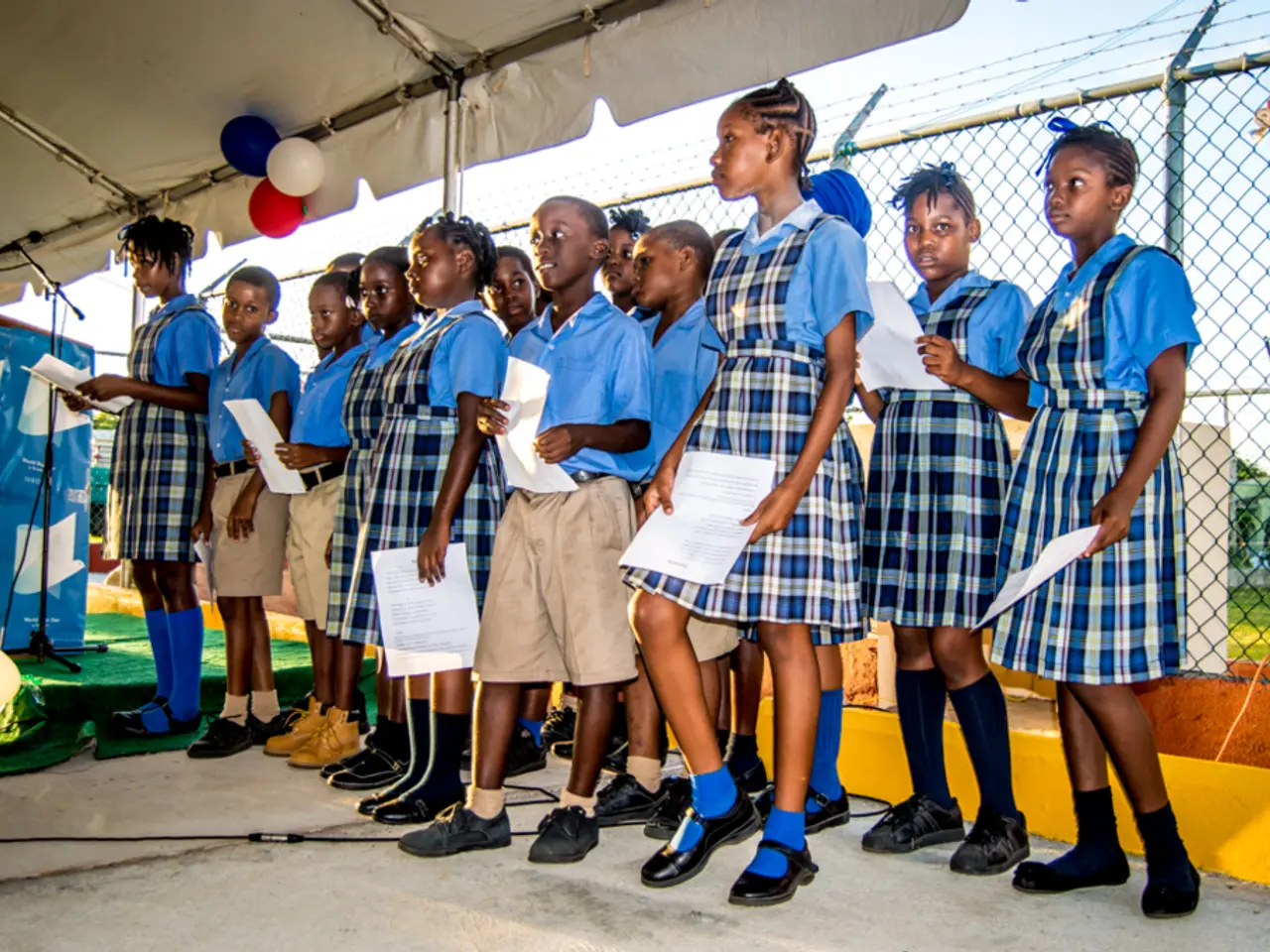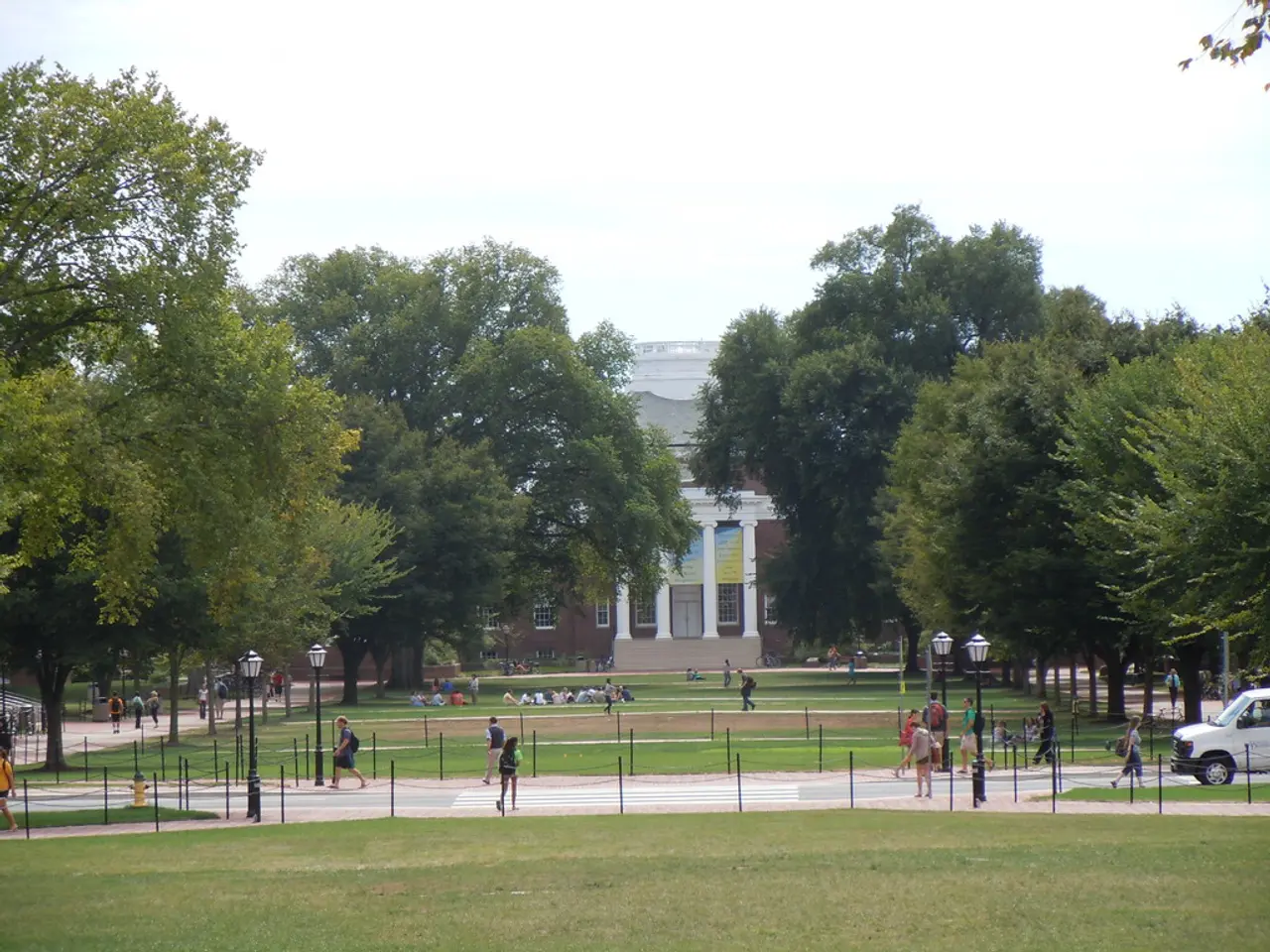Escalating attacks on educators: School officials issue urgent warnings
In a recent statement, Gerhard Brand, federal chairman of the VBE, expressed concern over the high level of violence against teachers in schools across Germany. Brand stated that it is unbearable for teachers to continue being victims of violence while performing their duties.
According to the VBE, parents are responsible for 79% of psychological violence against teachers, while 97% of physical attacks are perpetrated by students. Alarmingly, violence by external adults, blaming teachers for political decisions during the COVID-19 pandemic, was documented for the first time.
The VBE is advocating for targeted measures to improve school safety, but has not specified what these measures might entail. Only about half of the school principals reported that they could adequately support affected teachers, with uncooperative perpetrators, bureaucratic hurdles, or lack of support from school authorities often preventing school principals from providing the necessary assistance.
In response, school authorities and governments are implementing multi-layered strategies that focus on prevention, intervention, and creating supportive environments. Key proposed measures include:
- Implementation of evidence-based violence prevention and suicide prevention programs: Schools are required to use approved programs that provide annual instruction to students, particularly in grades 6 through 12, covering topics such as violence prevention, suicide awareness, and social inclusion. These programs often include training to recognize warning signs and anonymous reporting systems to encourage early alerts before incidents escalate.
- Comprehensive safety frameworks and protocols: For example, Ohio's law mandates the creation of comprehensive safety plans including threat assessment teams, emergency management plans, and staff training to identify and respond to violence or suicide risks. Schools review and align their policies with legal requirements to ensure effective implementation.
- Enhanced security guidelines and infrastructure: The Partner Alliance for Safer Schools (PASS) released the latest safety and security guidelines emphasizing a layered and tiered approach toward securing facilities. This includes physical security perimeters, campus safety, and newly added focus on cybersecurity to protect digital infrastructures in schools.
- Community and district-wide violence prevention initiatives: Programs like Clayton County Public Schools’ “The Power of Peace” Violence Prevention Tour engage students, families, and community leaders through restorative practices, empowerment, and accountability messaging. These tours target high school students, especially freshmen and those with behavioral challenges, providing mental health resources and community dialogue to foster safer environments.
- Promotion of social inclusion and positive climate: Schools and community organizations are encouraged to implement programs fostering empathy, problem-solving, conflict management, and teamwork among students, which help reduce violence by improving school culture and student relationships.
- Partnerships between schools, families, and community organizations: Community engagement, mentoring, after-school activities, and supportive environments outside the classroom are recognized as essential in violence prevention strategies.
The VBE demands that municipalities be held more accountable and financial support be increased for security measures. Only about half of the schools have a second alarm signal for emergencies, indicating a need for enhanced safety infrastructure.
77% of school principals wish for closer cooperation with state institutions and more support from multidisciplinary teams. These combined efforts aim to reduce violence, promote mental health, and create supportive, safe learning environments in all types of schools.
Other education-and-self-development initiatives could focus on teaching students about social inclusion, empathy, and conflict management to reduce violence in schools. General news outlets might report on the crime-and-justice implications of external adults attacking teachers, particularly those responsible for political decisions during the COVID-19 pandemic.




